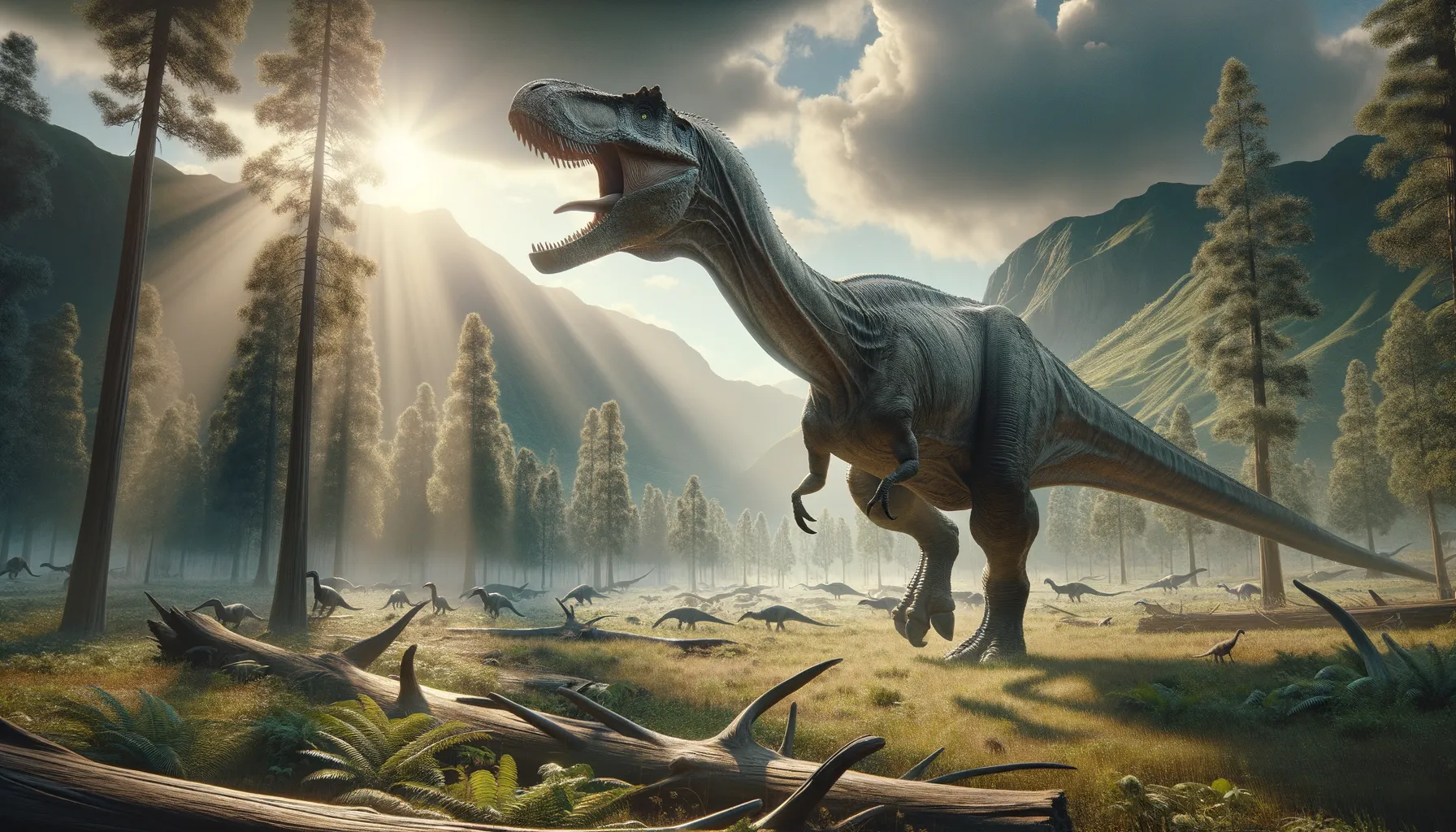
Barrosasaurus
A gentle giant of the ancient world.
Period
Cretaceous
Length
Could reach lengths of about 16 meters.
Height
Potentially up to 5 meters tall.
Weight
Estimated to weigh around 15 metric tons.
Barrosasaurus was a sizable sauropod dinosaur that roamed the Earth during the Late Cretaceous period. Known for its impressive length and towering size, it was a herbivorous giant predominantly found in what is now South America. Its discovery provided significant insights into the diverse dinosaur fauna of its time, showcasing a rich evolutionary history. As a member of the Titanosauria group, it played a vital role in its ecosystem.
Diet
Barrosasaurus was herbivorous, feeding primarily on the abundant plant life available during the Cretaceous period. Its long neck would allow it to reach high vegetation, pulling down branches and leaves for nourishment.
Hunting
Being a plant-eater, Barrosasaurus did not hunt for food. Instead, it foraged across its habitat, utilizing its height to access foliage that many other herbivores could not reach, minimizing competition for food sources.
Environmental challenges
Barrosasaurus faced challenges such as fluctuating climate conditions and occasional scarcity of food resources. Predator threats were ever-present, necessitating constant vigilance despite their large size. They had to adapt to diverse ecosystems as the continents continued shifting during the Late Cretaceous.
Speed
Barrosasaurus was likely slow-moving given its large size.
Lifespan
It likely lived for several decades.
First discovery
Discovered in Argentina in 2005 by scientists from Zaragoza University.
Fun Facts
- Barrosasaurus was a dinosaur that lived during the Late Cretaceous period, about 85 million years ago.
- This dinosaur was discovered in Argentina, which is famous for its rich dinosaur fossil sites.
- Barrosasaurus was a large herbivore, meaning it mainly ate plants.
- It belonged to a group of dinosaurs known as sauropods, which are recognized for their long necks and tails.
- Barrosasaurus is named after the Sierra Barrosa region in Argentina where its fossils were found.
- Like many sauropods, Barrosasaurus likely moved in herds, which helped protect them from predators.
- Although not much is known about its size, many sauropods were some of the largest land animals to have ever lived.
Growth and Development
From infancy, Barrosasaurus experienced rapid growth, reaching sizes large enough to deter numerous predators. Their bones grew in distinct phases, alternating periods of fast and slower growth. This process provided advantages during different life stages, ensuring their survival.
Habitat
Barrosasaurus lived in vast floodplain environments that featured lush plant life ideal for its diet. These areas would have included rivers and seasonal wetland regions. The habitat further offered plentiful nesting grounds and maintained a balanced ecosystem.
Interaction with other species
As a large herbivore, it may have coexisted with other sauropods and smaller plant-eaters. Predators would include large theropods, making Barrosasaurus a potential target, although its size offered substantial protection. Symbiotic relationships with smaller species likely helped keep its skin clean of parasites.
Natural lifespan
Living for potentially up to 70-80 years if conditions were favorable.
Reproduction
It is believed that Barrosasaurus laid eggs in clutches, with nests possible made in soft, sandy soil to protect them. This reproductive strategy involved the production of multiple offspring to ensure that a few survived to adulthood, considering predation risks.
Social behaviour
Barrosasaurus may have exhibited herd behavior for protection and efficient foraging. Behavioral traits might have included communication through vocal sounds, although evidence remains speculative. Social interactions could bolster defense against predators.
Fossil locations
Fossils of Barrosasaurus have been predominantly uncovered in the Neuquén Basin of Argentina. These findings have provided critical information on the sauropod diversity of South America. Continued exploration in this region holds potential for discovering more about its life and environment.
